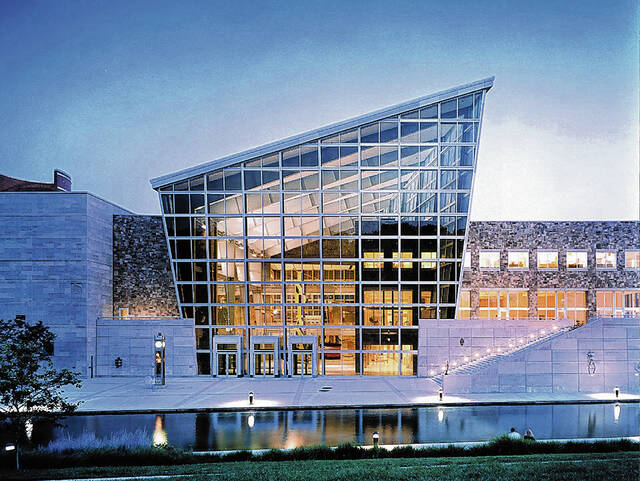
A new exhibit at the Indiana State Museum examines the life and career of Marshall “Major” Taylor, a Black championship cyclist in the late 1800s and early 1900s.
SUBMITTED PHOTO
In a city known for speed, one of Indianapolis’ most accomplished racers broke world records and won countless races on two wheels.
Marshall “Major” Taylor took the cycling world by storm in the late 1800s and early 1900s. He won more than 100 races, was victorious in back-to-back world sprint championships and set seven world records by 1898.
The fact that he was able to accomplish so much while facing bigotry and racism makes his excellence even more impressive.
“He was a pioneer. He was a champion. He won a world championship before 1900. He came up in a time when there was not many opportunities for Black men. That he was able to achieve greatness in the face of so many obstacles, so many difficulties, is amazing,” said Kisha Tandy, curator of social history at the Indiana State Museum.
Taylor’s life and racing career enters the spotlight in a new exhibition at the Indiana State Museum. “Major Taylor: Fastest Cyclist in the World,” which opened recently, takes visitors on an interactive journey into the realm of the champion cyclist.
People will step into the training room to learn how Taylor developed his speed and agility through a regimen of exercise and diet. At the same time, they’ll learn about the constant and at times overwhelming racism that he battled on and off the track. Contemporary cycling greats Justin Williams and Rahsaan Bahati, an Indiana University graduate, will share how Taylor’s story has the power to inspire a new generation of Black riders.
Despite Taylor’s success, his story is not as well known in his hometown as you’d expect for a titan of cycling, said Brian Mancuso, vice president of exhibits at the Indiana State Museum. This exhibit will hopefully change that.
“We want to put on display that he’s not just a sports hero, not just a man who had to struggle against unimaginable racial hatred and social injustice, but he’s a family man, a world traveler,” Mancuso said. “All of those stories can come together around an experience that we hope illuminates cycling and bike riding and bike usage in the city, and all aspects of Major Taylor.”
Taylor was born in Marion County in 1878. His unusual nickname came while he was living in Indianapolis, where he would perform tricks and stunts outside a bike shop to attract business while wearing a military uniform.
As a teenager, he developed into a world-class cyclist. But his career was stymied by racism; Indianapolis’ race tracks were declared “whites only,” leaving him little opportunity to compete. So in 1895, he moved to Worcester, Massachusetts, where he found a more welcoming racing community.
“One of the huge tragedies of Major Taylor’s life is that he had to leave Indianapolis because it was not an environment he could thrive in,” Mancuso said. “He really came into his own and became the champion he was destined to be after he left the city, because it was so filled with racism and hatred.”
Taylor’s success was stunning. In 1898 alone, Taylor won 29 races, finished second nine times and third 11 times. In 1899 and 1900, he won the world sprint championships. He was only the second Black man to win a championship in any sport, following boxer George “Little Chocolate” Dixon.
From 1901-1903, Taylor had 113 first-place finishes and was second 48 times.
Still, racist attitudes conspired to block Taylor’s greatness. He was often denied food and accommodations in the communities where he raced. Other riders would conspire to defeat him, threaten him and assault him. During one race, a rider pulled him from his bike and choked him into unconsciousness.
“In his autobiography, which was published in 1928, he talks about how he had to deal with the dreadful monster of prejudice,” Tandy said. “But he also talked about the joy of winning and succeeding and his first-place victories, and his opportunity to be an international superstar.”
Taylor’s amazing story seemed like a natural focus for a major exhibition, particularly considering Indianapolis was his early home. The exhibit has been in planning for the past four years. As the museum holds a collection of Taylor’s personal items, it was an opportunity to honor the man at a time when his story is emerging more into the public eye, Mancuso said.
Local residents may have heard of the Major Taylor Velodrome, an Indianapolis bicycle racing arena, and greater focus has been put on Taylor with a downtown mural and other honors, but many people still don’t know the man behind the name.
“There’s been a lot of recognition of this hometown hero who didn’t really get a lot of recognition for a long time,” Mancuso said.




